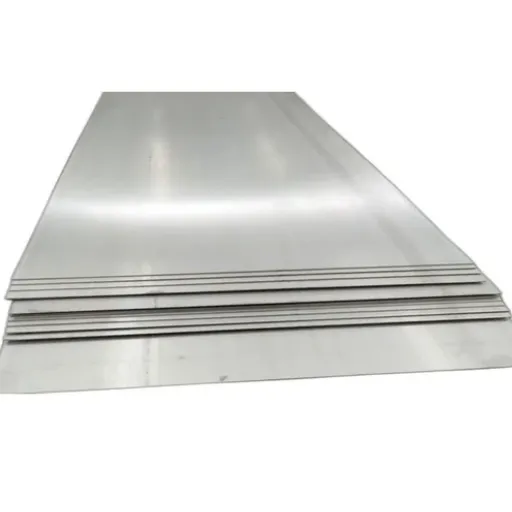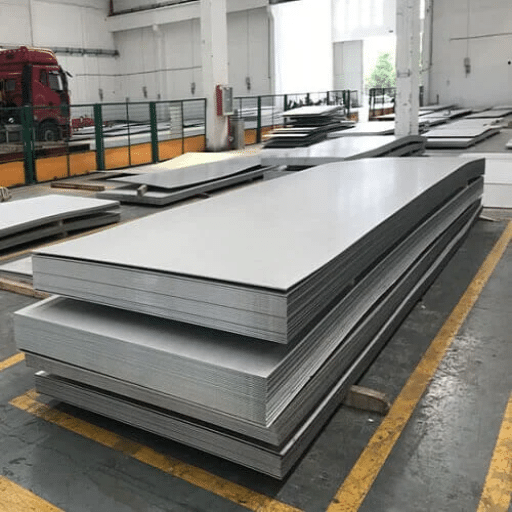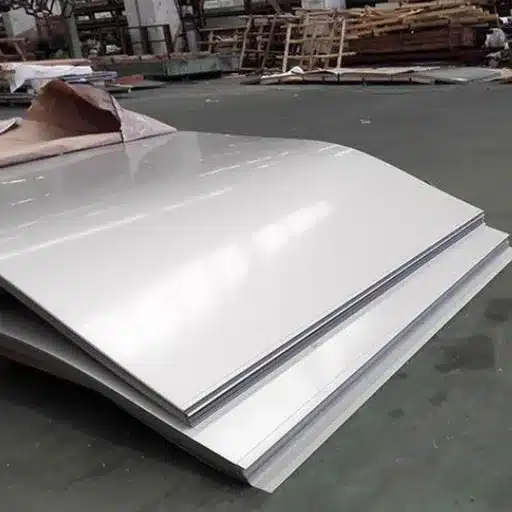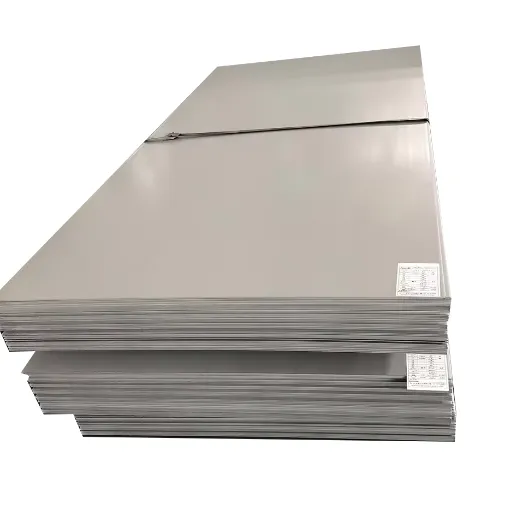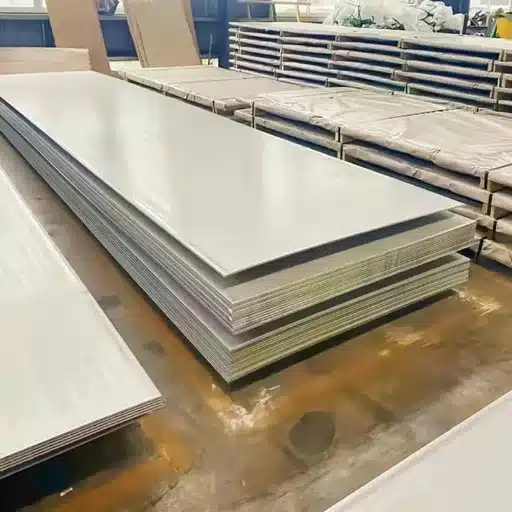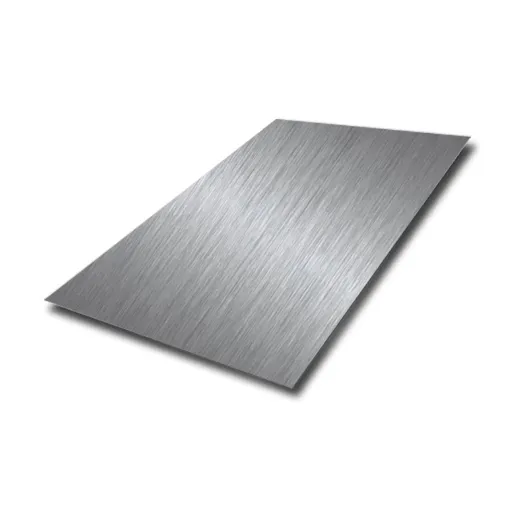When it comes to selecting material for manufacturing, engineering, or machining applications, the 1018 steel stands out as the most adaptable and thus widely applied steel. 1018 steel is the gateway low-carbon, mild steel with an excellent combination of strength, ductility, and machinability. But what exactly makes 1018 steel dependable? Is it ever considered for automotive, building, or robotic works? This in-depth guide will shed light on everything from the chemical composition to the mechanical properties to present-day applications, along with what made it so popular. Whether you are a specialist in manufacturing, an engineering student, or just another curious soul, this write-up will provide results-oriented guidance so that you never have to make an uninformed decision on using 1018 steel in your next project.
Introduction to 1018 Steel
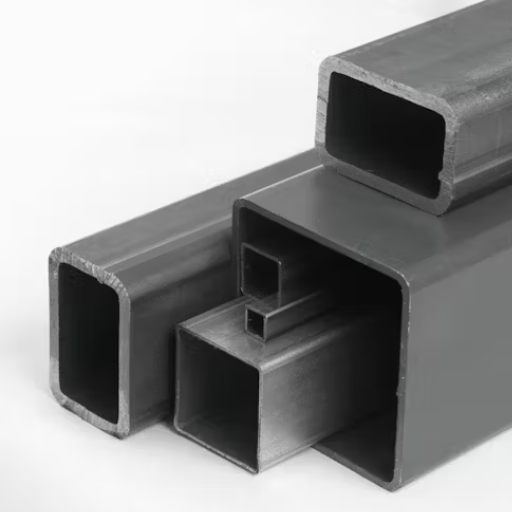
Being a low-carbon steel, 1018 steel has excellent weldability and machinability, and is versatile in various industries. And with the nominal carbon content of 0.18%, it is softer and more malleable than other hard steels, but with enough strength for a good number of purposes. Chemically, this steel has elements such as iron between 98.81% and 99.26%, carbon between 0.15% and 0.2%, while other elements such as manganese and phosphorus are in trace, which help in increasing durability and performance characteristics. Where precision machining, moderate strength, and easy fabrication of gears, shafts, and fasteners are entailed, the properties of 1018 steel make it quite suitable.
What is 1018 Steel?
Mild steel with low carbon, having a cold-rolled type steel, 1018 steel possesses good machinability and is very versatile for varied industrial applications. Generally, its chemical composition contains almost 0.18% carbon, 0.6-0.9% manganese, with the balance being iron, together with traces of others such as sulfur and phosphorus to modify its properties. The processing of 1018 steel includes special features such as cold rolling, which provides a good finish to its surface and allows for closer dimensional control compared to other types of steels, as well as other mechanical improvements.
Another steel is malleable to welding and has uniform ductility and moderate strength, fitting for processes of precision machining and forming. Applications of 1018 steel commonly include manufacturing pins and spindles; shafts, rods, and structural members needing tight tolerances and good uniformity. These somewhat well-balanced properties can be further assisted by heat treatment techniques, such as case hardening, which increases the surface hardness and wear resistance according to the requirements of the engineering.
Types of 1018 Steel: Cold Rolled vs Hot Rolled
The basic difference separating cold-rolled and hot-rolled 1018 steel is that it is a difference in working, which greatly influences the properties and applications.
Cold-rolled 1018 Steel is processed at room temperature, which affords a finer surface finish and tighter dimensional tolerances. From the viewpoint of mechanical characterization, with reference to tensile strength, cold rolling increases this property together with a superior surface finish as a result of strain hardening during the rolling process. Applications of cold-rolled 1018 steel are limited to those wherein precision and thereby consistency are demanded, including shafts, automotive components, and machine parts.
Hot-rolled 1018 Steel is the type of steel that is processed at high temperatures exceeding the temperature for recrystallization of the material. This condition makes the shaping and forming of steel easy, which is thus suitable for large structural applications. Comparing with the surface finish and dimensional tolerances of the cold-rolled steel, hot-rolled 1018 steel has a less refined surface finish and broader dimension tolerances, but is reasonably priced for use in structural beams, heavy machinery parts, and welding purposes.
Choosing between cold-rolled and hot-rolled 1018 steel will finally depend on the particular requirements of the engineering project, such as dimensional tolerance, mechanical properties, and economy.
Overview of Carbon Steel
Carbon steel is one of the most versatile materials used by industrial applications for its strength and cost efficiency. It consists mainly of iron with carbon amounts of 0.05%-2.1% weight. Properties of carbon steel change with the carbon amounts. Steels that contain less than 0.3% carbon, also called low carbon steels or mild steels, characteristically exhibit very good weldability and very high ductility properties. These properties make them good for structural applications and manufacturing. Medium carbon steels, with carbon amount of 0.3%-0.6%, have strength and ductility balanced well and are commonly used for automotive parts, shafts, gears, and fasteners. High carbon steels having their carbon content in the range 0.6% to 1.0% exhibit high hardness and good wear resistance. Hence, they are essentially used as primary cutting tools, blades, springs, high carbon steel wires, and so on.
Furthermore, alloying elements such as manganese, sulfur, silicon, and phosphorus are often added to carbon steel to improve certain mechanical properties such as tensile strength, toughness, and machinability. Hence, knowledge regarding these compositional variants is critical in selecting the appropriate grade of carbon steel in exact engineering applications, so it performs optimally in different operating conditions.
Chemical Composition of 1018 Steel

1018 steel mainly comprises iron as the base element with some small quantities of other elements. The typical chemical composition is:
- Carbon (C): 0.15% – 0.20%
- Manganese (Mn): 0.60% – 0.90%
- Phosphorus (P): Maximum 0.040%
- Sulfur (S): Maximum 0.050%
Understanding AISI 1018 Composition
Said to be fairly balanced in its mechanical properties, AISI 1018 steel is hence in high demand in several industries. This is a low carbon steel that produces tensile strength ranging from 440 MPa (64,000 psi) to 590 MPa (85,000 psi), depending on treatment and working. At the same time, its yield strength can range about 370 MPa (54,000 psi), thus making this low carbon steel suitable for moderately heavy structural or mechanical applications. The material exhibits well-balanced ductility and elongation, with a rate in the 15-25% range, thus ensuring that it undergoes deformation rather than breaking.
Comparison with Other Low Carbon Steels
|
Steel Grade |
Carbon Content (%) |
Tensile Strength (MPa) |
Machinability (%) |
Applications |
Key Features |
|---|---|---|---|---|---|
|
1018 |
0.15-0.20 |
440-790 |
70% |
Shafts, pins, machine parts |
Easily machinable, case-hardened |
|
1020 |
0.18-0.23 |
390-580 |
65% |
Automotive and construction uses |
Good weldability, low strength |
|
1045 |
0.43-0.50 |
570-700 |
55% |
Axles, gears, bolts |
Stronger, harder, less ductile |
|
1215 |
0.09-0.13 |
425-525 |
136% |
High-speed machining applications |
Superior machinability |
|
A36 |
0.25 (max) |
400-550 |
60% |
Structural applications |
Widely available, versatile |
|
1144 |
0.40-0.48 |
690-1080 |
83% |
Shafts, spindles, fasteners |
High tensile strength, fatigue-resistant |
Impact of Chemical Composition on Properties
The mechanical properties of steel, like tensile strength, ductility, machinability, and fatigue resistance, are directly influenced by its chemical composition. For example, hardness and strength go up with carbon content, but ductility goes down and so does weldability, as is the case with grades 1045 and 1144. Manganese imparts toughness and wear resistance while sulfur and phosphorus – generally undesirable – can aid with machinability when in controlled amounts, as in the case of 1215.
The steel properties have been further modified by the introduction of alloying elements like chromium, nickel, and molybdenum. Namely, chromium contributes to hardening and oxidation resistance, and nickel contributes to toughness at low temperature; molybdenum will give strength at high temperature and also some corrosion and pitting resistance. A higher level of these alloying elements would make it more expensive to produce and sometimes adversely affect machinability qualities; hence, a good balance should be struck for any given application.
Mechanical Properties of 1018 Steel
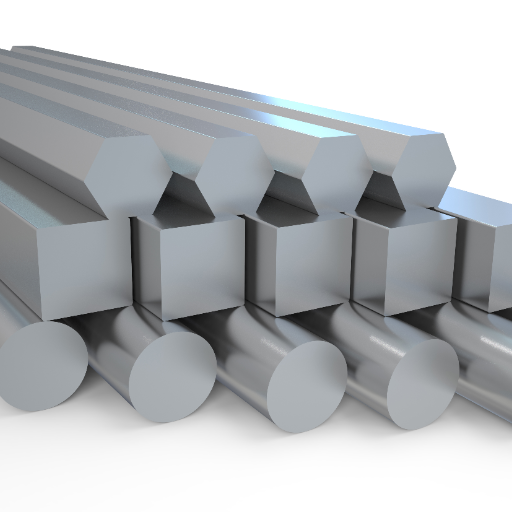
1018 is a low-carbon steel grade that is well-balanced in terms of strength, ductility, and machinability. Its prime mechanical properties are:
- Tensile Strength: Around 440 MPa (64,000 psi), marks how much force it could take from pulling before it would fail.
- Yield Strength: Around 370 MPa (53,700 psi), which reflects the maximum stress it can endure without permanent deformation.
- Elongation at Break: Generally classified in between 15-17%, serving a representation for ductility with the formation operations.
- Hardness: About 126 HB (Brinell Hardness), imparting moderate wear resistance for several general-purpose applications.
Tensile Strength and Yield Strength
Tensile strength and yield strength are critical mechanical properties that define the performance of 1018 steel in various applications. Tensile strength describes the actual fracture strength of a specimen before failing, which in 1018 steel is about 440 MPa (64,000 psi). On the other hand, yield strength is the amount of stress it can safely withstand without any permanent deflection being measured at approximately 370 MPa (53,700 psi) on the general activities of steel AISI 1018. These two properties of steel make 1018 suited to components that will be subjected to moderate load without permanent deformation. Conversely, the two mechanical properties also balance 1018 steel’s strength and ductility, allowing it to be heavily used in spindles, plow discs, and mild wear parts that require dependable workability.
Hardness and Machinability
The hardness of 1018 steel, measured by the Brinell scale, is about 120 HB. This hardness value guarantees surface wear resistance for the material in regular wear applications. When hardened, 1018 steel displays an increase in hardness; however, the base hardness is still low, presenting advantages for surface treatment applications where larger hardness values are desirable. It is this flexibility and balance of strength versus machinability that make the material attractive.
The machinability rating of 1018 steel is about 78% of that of 1212 steel, which is the benchmark for machinability evaluations. Such a high machinability rating places 1018 steel among the best for industrial procedures, comprising turning, milling, and drilling. Its low carbon content facilitates good cutting action and prevents tool wear during machining. Also, 1018 steel is an excellent case hardening steel, which enhances surface hardness and keeps the inside ductile, thereby opening the scope of applications for this steel.
Bending and Cold Forming Capabilities
Due to its ductility and low carbon content, 1018 performs very well in bending and cold forming applications. It can take great deformation before fracture, which is good where very complex shaping and tight radii are required. The uniformity and consistency of the steel during forming ensure predictable results that minimize the risk of imperfections or weaknesses within the work. There is also a response to stress relieving after bending, minimizing residual stresses, which is highly favored in the area of dimensional accuracy and mechanical integrity. The preceding attributes make 1018 steel a good choice for things like brackets, clamps, and structural parts where precise shaping and durability are required.
Manufacturing Processes for 1018 Steel
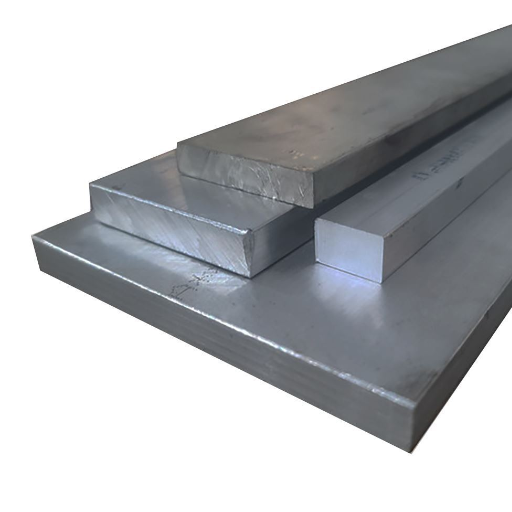
- Melting and Refining
In the initial stage, the melting of raw materials is undertaken in either an electric arc furnace or a basic oxygen furnace. This process ensures that the proper composition of carbon and other alloying materials is present, conforming to the low carbon specifications of 1018 steel.
- Hot Rolling
After being cast into billets or slabs, the molten steel is hot-rolled at high temperatures to render the material into bars, sheets, etc., and to consolidate the grain structure.
- Cold Drawing (Optional)
For certain applications needing better surface finish and tighter dimensional tolerances, 1018 steel is cold drawn, which raises its tensile strength and improves the surface finish.
- Heat Treatment
Cold Rolling vs Hot Rolling Processes
|
Parameter |
Cold Rolling |
Hot Rolling |
|---|---|---|
|
Temperature |
Performed at room temperature |
Performed at high temperatures |
|
Surface Finish |
Smooth, polished surface |
Rough, scaled surface |
|
Strength |
Higher tensile strength |
Lower tensile strength |
|
Dimensional Accuracy |
High precision and tight tolerances |
Less precise tolerances |
|
Applications |
Components needing precision and finish |
Structural applications and large sections |
|
Material Hardness |
Higher due to work hardening |
Lower as no work hardening occurs |
|
Cost |
More expensive due to additional processes |
Less expensive due to simpler processes |
|
Post-Processing Required |
Minimal post-processing |
Often requires descaling or finishing |
|
Formability |
Lower due to increased hardness |
Higher as material remains ductile |
|
Energy Requirements |
Lower as no heat is applied |
Higher due to heating requirements |
Heat Treatment and Stress Relieving
Heat treatment and stress relieving are some of the metallurgical processes used to attain the property changes in a metal: ordinarily, heat treatment consists of cycles of heating and cooling, basically to increase hardness, tensile strength, and wear resistance. It includes annealing, quenching, tempering, and normalizing such as common methods. In each case, a predetermined temperature and cooling rate are applied so that the steel undergoes specific microstructural changes, like martensite formation or grain recrystallization.
Stress relieving is instead meant to relieve internal stresses arising from working processes such as welding, forging, machining, etc. The material is heated below the transformation temperature to allow for uniform cooling. This ensures working stress relief of the residual stress, so likely distress or cracking jeopardizing follow-up service shall be minimized. For example, carbon steels are stress relieved between 1,100°F (593°C) and 1,300°F (704°C), with the exact temperature dependent on steel composition and its pre-stress environmental condition.
Swaging and Surface Finish Techniques
Swaging is a forging procedure involving the use of compressive forces to reshape metals or other materials into the desired shape with no elimination of material. The cold working method is especially used to reduce diameter, create tapered profiles, or develop detailed geometries on rods, tubes, and wires. The precision of swaging brings about convolution of mechanical properties, like tensile strength and surface hardness, from work hardening generated due to compressive deformation.
Applications of 1018 Steel
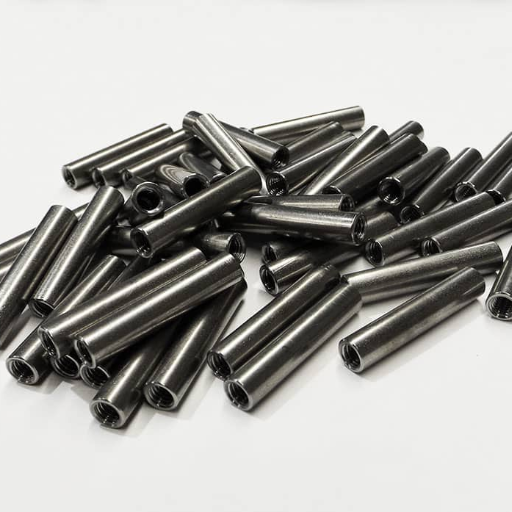
Due to the balanced offerings of strength, workable qualities, and versatility, 1018 steel is generally put into a wide array of industrial and commercial usages. Conventional applications include:
- Shafts and Pins: Great machinability makes it the selected material for manufacturing precision shafts, spindles, and dowel pins.
- Mechanical Components: Mostly for gears, fasteners, and machine parts where it is durable yet workable.
- Structural Applications: Fixtures, jigs, supports where moderate strength and resistance against deformation are required.
- Automotive and Machinery: Bolt and bushing parts that require tight tolerances.
The material offers uniformity, weldability, and ease of fabrication, and these qualities place 1018 steel in the list of widely used materials.
Use in the Automotive Industry
Because of its versatile nature, 1018 steel is very useful in the functioning of the automotive industry. Used in the manufacturing of shafts, gears, and pins, it provides durability and precision to automotive assemblies. Excellent surface finish and capability to be heat-treated in many ways make it even more superior to attain strength and wear-resistance through various machining technologies that further contribute to optimizing machining processes of 1018 steel parts with respect to dimensional accuracy and reduction in material wastage. These regulatory demands further complement the capability of the alloy toward the preparation of light-weight yet robust components, thereby rendering this alloy as the preferred choice for modern vehicular concepts. This ability to blend performance with diversity will ensure its existence through the changing automotive industry.
Construction Applications
- Structural Supports
Fabricated as held owing to its bearing capacity and ease of welding for beams, columns, and trusses.
- Fasteners
Addressed to a demand of superior precision in joining construction materials combining bolts, screws, and connectors.
- Reinforcements
Reinforcing concrete as rebar from a tensile nature works for the integrity of large-scale builds.
- Machinery Components
Construction machines like cranes and excavators, in their diverse ways, use shafts, gears, and axles as components that call for enduring materials to resist repetitive stresses.
- Railings and Frames
Ideal for applications requiring high durability, including guardrails and window or door frames, which attain functional ability and corrosion resistance through adequate surface treatment.
- Tooling and Fabrication
General Manufacturing and Machine Parts
These steel alloys serve as the core material for general manufacturing and machine building, as they possess the capability for tensile strength, versatility, and adaptability to meet various applications. They are widely used to create components that always require precision and durability: fasteners, brackets, bearings, and structural supports are some of them. From advancements in machining, especially CNC machining (Computerized Numerical Control), to making these parts with utmost accuracy within tight tolerance requirements of today’s applications, and on top of that, some heat-treatment processes to fine-tune the steels to improve their hardness, wear-resistance, and fatigue life-under all these circumstances, steel alloys stand competitive and aptly suited for applications in platforms such as automotive, aerospace, and heavy machinery.
Reference Sources
1. Erosion-Corrosion Performance of AISI 1018 Carbon Steel
- Source: MDPI Metals, 2019
- Key Findings:
- AISI 1018 steel exhibited 4.12 times higher erosion-corrosion rates compared to 304L stainless steel in slug flow conditions.
- The primary degradation mechanisms included ploughing, cutting, and pitting.
2. Mechanical Properties of Cold-Drawn AISI 1018 Steel at High Temperatures
- Source: Journal of Materials Research and Technology, 2020
- Key Findings:
- Elastic modulus of 1018 steel decreased rapidly at 100–200°C, with a sharp reduction at 550–750°C.
- Dynamic strain aging (DSA) was observed, enhancing mechanical strength and ductility at 300–500°C.
3. Corrosion Inhibition of AISI 1018 Steel Using Sweet Crude Oil
- Source: Corrosion Reviews, 2024
- Key Findings:
- Immersion in sweet crude oil for 144 hours reduced corrosion rates by 88% in CO2-saturated NaCl solutions.
- The protective effect was attributed to the adsorption of crude oil compounds, forming a hydrophobic layer.
Frequently Asked Questions (FAQs)
Q: What are the mechanical properties of 1018 steel?
A: 1018 steel is a low carbon steel known for its excellent machinability and good mechanical properties. It typically exhibits a tensile strength of around 440-580 MPa and a yield strength of 370 MPa. The low carbon content contributes to its good ductility and weldability, making it ideal for various applications, including machine components and structural parts. Additionally, its surface finish can be improved through various processes, enhancing its overall performance. In comparison to higher carbon content steels, 1018 offers a balance between strength and formability, making it a versatile choice in fabrication.
Q: How does the chemical composition of 1018 steel affect its properties?
A: The chemical composition of 1018 steel, which includes approximately 0.18% carbon, plays a crucial role in defining its properties. The low carbon content gives it good weldability and machinability, while the inclusion of small amounts of manganese helps improve its hardenability. This composition allows for good case hardening qualities, which can be advantageous in applications requiring a durable surface. Furthermore, the steel can be cold rolled or hot rolled to achieve desired dimensional accuracy and surface finish. In contrast, higher carbon steels may provide increased strength but can compromise ductility.
Q: Can 1018 steel be used for cold forming and bending?
A: Yes, 1018 steel is well-suited for cold forming and bending due to its low carbon content, which enhances its formability. This steel can be easily shaped into various configurations, such as rectangle bars or round bars, without the risk of cracking. Its excellent machinability also allows for precise fabrication, making it a preferred choice for manufacturing parts that require severe bends. It is advisable to use proper techniques during the bending process to prevent cracking, particularly in sharp bends. Additionally, post-bending heat treatment can improve its mechanical properties, ensuring durability.
Q: What is the difference between 1018 hot rolled steel and 1018 cold rolled steel?
A: The primary difference between 1018 hot rolled steel and 1018 cold rolled steel lies in their manufacturing processes and resulting properties. Hot rolled steel is produced at high temperatures, which allows for easier shaping and forming, while cold rolled steel is processed at room temperature, resulting in a smoother surface finish and tighter tolerances. Cold rolled 1018 steel typically has higher tensile and yield strength due to strain hardening during the cold working process. Additionally, cold rolled steel is often used in applications requiring improved dimensional accuracy and a better surface finish, making it ideal for precision parts. Both types have their distinct advantages and can be selected based on specific project requirements.
Q: How does heat treatment affect 1018 steel?
A: Heat treatment can significantly enhance the properties of 1018 steel, particularly in terms of hardness and strength. Common heat treatment processes for this low carbon steel include annealing, quenching, and tempering. Annealing softens the steel, making it easier to machine, while quenching can increase hardness but may also introduce brittleness if not followed by tempering. Proper heat treatment can improve the steel’s performance in applications such as gears, sprockets, and other components requiring good case hardening qualities. It is essential to select the appropriate heat treatment process to achieve the desired balance between hardness and ductility, especially when the steel will be subjected to stress or impact.

